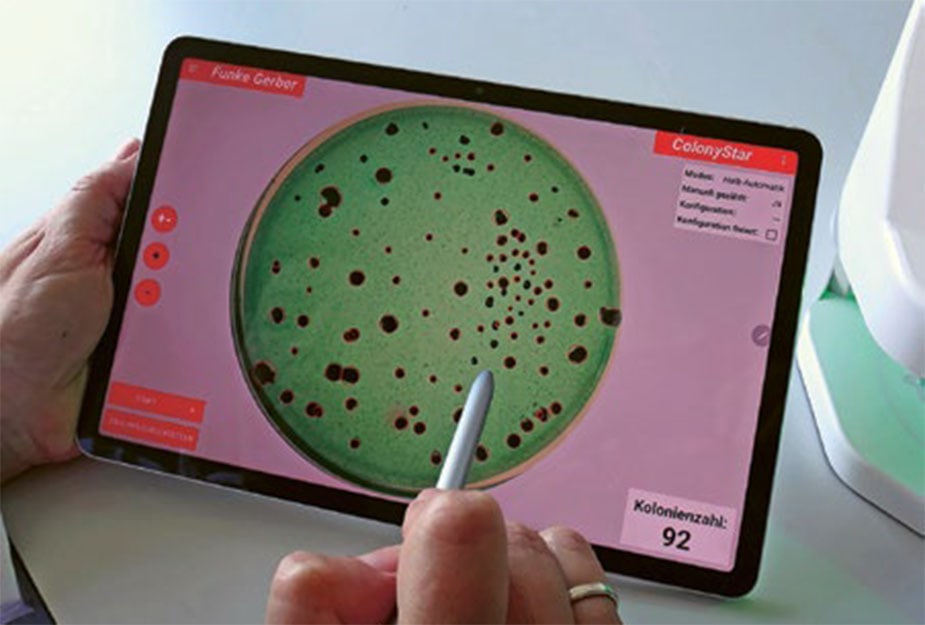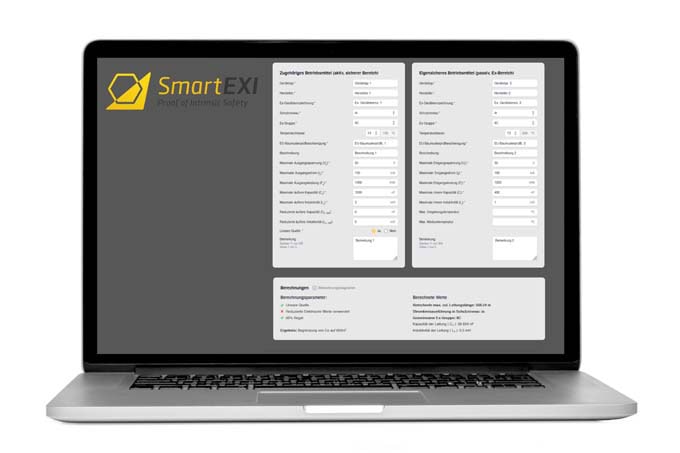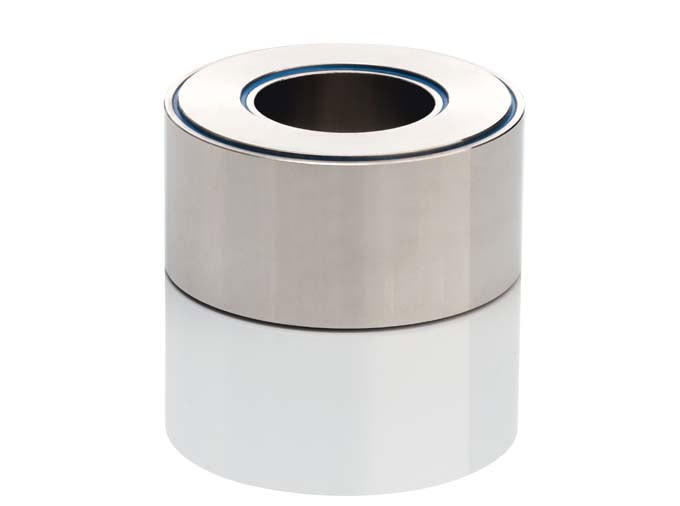Germ count determination: No more time-consuming hand counting
A colony counter with detachable tablet is optimized for everyday laboratory use: An assistance mode automatically recognizes similar colonies and allows germ count determination with just a few clicks.

Image: Funke-Dr. N. Gerber Labortechnik GmbH
Regular microbial count determinations are part of the routine tasks of numerous laboratories in the beverage and food industry in order to exclude contamination of the products with bacteria, viruses, yeasts or molds during production. In the context of hygiene management and quality control, the total plate count is one of the most important key figures. It indicates how many microorganisms are present in a sample. Depending on the type of microorganism, certain guideline values must not be exceeded.
Semi-automatic counting mode
Therefore, samples are routinely cultured on Petri dishes in order to be able to determine the germ concentration after a certain time by means of colony counting. However, outdated devices in particular, which require each colony to be viewed individually with a light table and magnifying glass, quickly turn this task into a time-consuming ordeal. Automatic devices are more reliable, but they are usually designed for large batches and involve a certain amount of effort. The ColonyStar automatic from FunkeGerber, on the other hand, has been developed in such a way that the device greatly speeds up manual determination by means of a semi-automatic counting mode. For example, only 4 to 15 actions are required to mark 200 colonies, but the user always retains full control and, unlike with fully automatic solutions, does not have to rely solely on the device. In addition to this assistance mode, the system can still be trained on selected colonies, whereby predefined samples can also be counted completely automatically.
Assistance mode allows fast and reliable counting
The device consists of a base and a detachable tablet. The camera, the exposure unit and the specimen holder are housed in the device. The tablet and the determination software installed on it are used to mark and evaluate the sample. After pressing the "Start" button, the high-resolution camera creates an image of the Petri dish and sends this wirelessly to the tablet via WLAN. Individual colonies can be marked with the finger or a stylus via touch. In the assistance mode, further colonies of the same type are now automatically detected, marked and counted. The system can be trained for different types of bacteria and agar with a learning function. For example, 10 to 15 Petri dishes with one and the same species on the same agar can be evaluated and saved as a profile - such as Salmonella or yeast - after the learning phase is complete. Later, similar colonies that match this profile can be evaluated fully automatically: The Petri dish is placed in the scanner for this purpose, and after actuating
of the "Start" button, the user will receive the corresponding number of colonies.
Handy design facilitates everyday laboratory work
The intelligent, intuitive system is suitable for all Petri dishes up to a maximum diameter of 9.5 cm and can be used in all microbiology laboratories such as the food industry, but also in medicine, research, veterinary medicine or in public administration offices such as environmental agencies.









